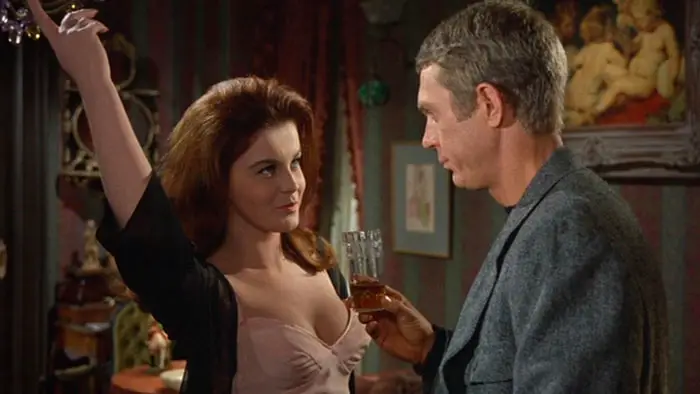
Todd Herman’s “Cabinet” begins with a with a shot of a woman giving birth. We hear the mother’s labor screams. Immediately we cut to a funeral and the murmuring sound of a rabbi’s prayer. The third shot is of a distant ship on the water. These three shots seemingly announce “the journey of life” as the film’s subject. (Later the ship will be overtaken by a giant wave.)
All of the images in the film are black and white and are suffused with a milky glow, as if an unseen spiritual presence hovers over everything. This quiet, meditative film dwells on nearly still shots of a modest home. The camera peers into odd corners, in between pieces of furniture. A cabinet with glass doors contains tchochkes and a menorah; reflected in the glass, we can see a woman vacuuming. The soundtrack of the film contains mostly peaceful ambient domestic sounds, but also, chillingly, the watery labored breathing of a man with pneumonia. (Later, we also see his face.) Two morticians come to wrap up and carry off the man’s body after he has apparently died. A nursing mother’s breast is seen, dripping milk.
The dedication of the film to the memory of a man in the Herman family indicates that this is a highly personal diary film, perhaps made during a time when Herman becomes a father while at the same time he loses a father or an uncle.
If this were a staged, fictional film, it would simply be a gentle, poetic visual meditation on the universal themes of death and birth. When an artist makes a personal diary film, especially about a traumatic event, it always raises some issues in my mind. When a person decides to take events from their real life and turn it into a movie, it is both a way of exploring, processing and finding the truth of these events, as well as a way of distancing oneself from the trauma by turning it into an aesthetic object. How does it feel for Herman’s family, in the midst of their trauma, to have one family member filming everything? How does Herman maintain the presence of mind to keep filming as the morticians carry off the body? Most people cannot fully experience a trauma as it is happening, and we all create some kind of inner device to distance ourselves from our feelings. A man with a camera is only making a more visible example of how we all deal with loss. The resulting film, like the cabinet within it, is a box into which we can place memories of life’s upheavals, safely behind glass.

